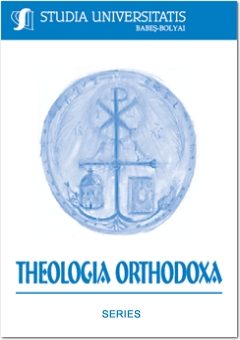TUDOR JARDA AND THE WALLACHIAN LITURGY
TUDOR JARDA AND THE WALLACHIAN LITURGY
Author(s): Vasile StanciuSubject(s): Christian Theology and Religion
Published by: Studia Universitatis Babes-Bolyai
Keywords: liturgy; melody; hymnography; polyphony; stile; traditional.
Summary/Abstract: The composer Tudor Jarda is one of the most important representatives of the musical school of composition in Cluj. His activity is mingled with the activity of the “Gheorghe Dima” Academy of Music, in which he received his instruction and distinguished himself. In his choral creation, Tudor Jarda approached the Liturgy as well. This work intended for mixed chorus was destined to all Orthodox Romanian Christians or Greek-Catholic. This is the very reason why he entitled his work The Wallachian Liturgy, saying that there is no such thing as a Greek-Catholic liturgy, but only the liturgy of Saint John Chrysostom in Romanian language, which is sung both by the Orthodox and the Greek-Catholic. In his liturgy, Tudor Jarda uses a musical material of Church origin, which illustrates the meanings of the liturgical text and the archetypal formulas which, in a few sounds, claims strength of rich expression, as it is argued by Ligia Toma-Zoicaş. The work of Tudor Jarda joins, from the stylistic point of view, the traditional Romanian religious composition, which is based on the lectern singing, a fact that generated a proper style of composition, the style of the Church singing, different from the style of free composition. The choral Church singing which belongs to this style is destined for the cult, because it has all the characteristics which transform the singing into prayer.
Journal: Studia Universitatis Babes-Bolyai - Theologia Orthodoxa
- Issue Year: LVII/2012
- Issue No: 2
- Page Range: 181-192
- Page Count: 12
- Language: English

